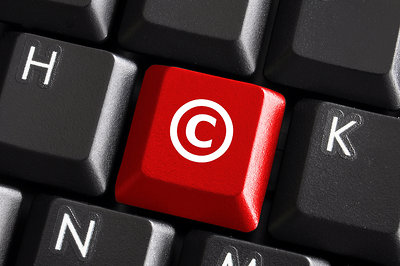Protect Your Brand from Cybersquatters
It has long been said that imitation may be the sincerest form of flattery.1 But in business, unauthorized “imitations” cost companies immeasurable sums in lost sales and damage to their reputations. Most companies likely will not find it particularly flattering when a counterfeiter imitates or incorporates a valuable brand name or trademark in a domain name with the goal of misdirecting consumers to its ersatz website, where the consumer will likely find counterfeit goods available for prices well below the typical retail process for authentic goods. Like in a Whack-A-Mole game, cybersquatters keep popping up. Companies seeking to prevent such unauthorized and unlawful conduct through legal action have attained mixed results.
The Anticybersquatting Consumer Protection Act (“ACPA”)2 “was intended to prevent ‘cybersquatting,’ an expression that has come to mean the bad faith, abusive registration and use of the distinctive trademarks of others as Internet domain names, with the intent to profit from the goodwill associated with those trademarks.”3 It renders liable to the trademark owner a domain registrant who, with “a bad faith intent to profit from” that mark, registers, traffics in or uses a domain name that is either identical or confusingly similar to a distinctive mark or is identical, confusingly similar or dilutive of a famous mark.
Some well-known fashion companies have used the ACPA to protect their brands. In September 2010, Polo Ralph Lauren and The North Face prevailed in an ACPA lawsuit to the tune of $78 million. In June 2011, Tory Burch won a $164 million cybersquatting suit against hundreds of operators of websites selling counterfeit Tory Burch footwear, handbags and accessories (at the time believed to be the largest monetary damage award ever granted to a fashion company in a suit against e-commerce counterfeiters). In March 2012 True Religion Apparel, Inc. attained an $863.9 million against 106 unknown cybersquatting counterfeiters operating from China (dethroning Tory Burch as the fashion company verdict record holder).4
While these staggering monetary awards (just over $1.1 billion) appear to be stunning successes, none of these fashion icons are likely to collect on their judgments.5 But these are not merely Pyrrhic victories because, aside from awarding astounding, even if uncollectible, monetary sums, these judgments have ordered that the bogus websites be disabled and their domain names turned over to the plaintiffs (the Tory Burch suit named 41 cybersquatting defendants that were linked to 232 domain names; in the True Religion suit the 106 defendants operated 282 websites), thereby preventing further harm from these counterfeit websites.
Thus, while the monetary damages recoverable under the ACPA are largely ineffective where the registrant is unknown or has no money to pay the judgment,6 the ACPA’s provision for transfer of the offending domain name to the owner of the mark (§1125(D)(1)(c)) has afforded trademark owners a significant measure of success.
The threat posed by cybersquatters has attracted the attention of many in the fashion industry, including the American Apparel & Footwear Association, which hosted a panel discussion in February 2012 addressing the topic and offering practical advice. Among the panel’s noteworthy suggestions was that companies provide a way for consumers to determine whether a store is an authorized retailer selling legitimate goods.
For example, Deckers Outdoor Corp. (which sells Ugg and other branded footwear) maintains a database that consumers can access to see a complete list of authorized online retailers of Ugg footwear.7 Another effective suggestion is that by capturing the URL to a felonious website (transferred following an ACPA action), the brand owner can use that address to divert traffic to its own website (which may itself be an e-commerce site or can direct consumers to authorized retailers).
Trademark owners should regularly police the market for infringers. This includes searching for cybersquatters who in bad faith register or use domain names incorporating an identical or confusingly similar version of your distinctive or famous mark. This way, companies can reduce, if not prevent, imitators from pilfering their sales.
— Footnotes —
1 According to Wikipedia, “imitation is the sincerest (form) of flattery” is attributed to Charles Caleb Colton (1780-1832), an English cleric, writer and collector (Wikipedia: Charles Caleb Colton).
2 15 U.S.C. §1125(D).
3 Shields v. Zuccarini, 254 F.3d 476 (3d Cir. 2001).
4 In a default judgment, Judge Harold Bear, Jr. (of New York’s Southern District Federal Court) held the defendants liable for willful trademark counterfeiting and copyright infringement.
5 Courts have ordered that PayPal accounts connected to the felonious websites be frozen.
6 The mark owner can recover up to three times its actual damages which include the profits the domain name registrant made from its use of the mark, as well as losses sustained by the mark holder as a result of the domain name registrant’s actions, such as lost sales or harm to the mark’s reputation. In lieu of actual damages, the mark owner can elect to recover statutory damages of between $1000 and $100,000 per domain (§1117). In “exceptional cases,” attorney’s fees can also be recovered. (§1117).
7 Ugg Authorized Online Retailers
Jeremy D. Richardson is an attorney on the fashion industry team at Phillips Nizer. His practice involves representing clients in the children’s apparel, accessories, and furniture industries. In April 2005, Jeremy was appointed to the Executive Committee of the American Apparel & Footwear Associations’ (AAFA) Product Safety Council, which most recently has focused its energies on educating its members about the Consumer Product Safety Improvement Act (CPSIA) of 2008.
Jeremy guides start-ups and entrepreneurs through protection of their intellectual property, negotiation of partnerships, and when necessary, the litigation of matters that cannot otherwise be resolved. He has argued before the Second Circuit Court of Appeals and has been admitted pro hac vice to practice in the California Superior Court.
About Phillips Nizer
Phillips Nizer LLP has been engaged in a wide-ranging practice of domestic and international law for over 80 years. Established in 1926 by Louis Phillips, former Assistant General Counsel to Paramount Motion Pictures, and Louis Nizer, considered one of the most outstanding trial lawyers of the twentieth century, the firm consists of lawyers who are well-respected leaders in their fields. Our bond with the fashion and apparel industries began in the 1940s, a relationship that continues to this day almost 60 years later. Our principal office is in New York City, with additional offices in Garden City, Long Island and Hackensack, New Jersey. For more information about Phillips Nizer LLP, please visit: http://www.phillipsnizer.com/











